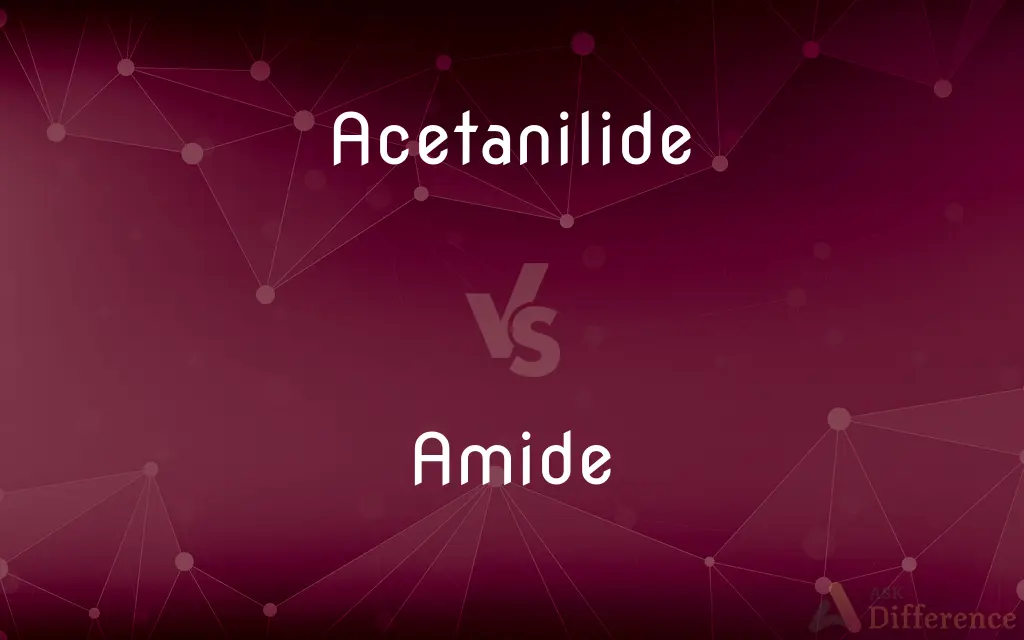Acetanilide vs. Amide — What's the Difference?

Difference Between Acetanilide and Amide
ADVERTISEMENT
Compare with Definitions
Acetanilide
Acetanilide is an odourless solid chemical of leaf or flake-like appearance. It is also known as N-phenylacetamide, acetanil, or acetanilid, and was formerly known by the trade name Antifebrin.
Amide
In organic chemistry, an amide ( or or (listen), also known as an organic amide or a carboxamide, is a compound with the general formula RC(=O)NR′R″, where R, R', and R″ represent organic groups or hydrogen atoms. The amide group is called a peptide bond when it is part of the main chain of a protein, and an isopeptide bond when it occurs in a side chain, such as in the amino acids asparagine and glutamine.
Acetanilide
The amide derived from acetic acid and aniline; once used medicinally as an analgesic and antipyretic
Amide
An organic compound containing the group —C(O)NH₂, derived from ammonia by replacement of a hydrogen atom by an acyl group.
Acetanilide
An amide formed from aniline and an acetyl group (C6H5.NH.CO.CH3); it is a white crystalline compound used as an analgesic and also as an antipyretic. It has molecular weight 135.16.
ADVERTISEMENT
Amide
An organic compound, such as acetamide, containing the CONH2 group.
Acetanilide
A white crystalline compound used as an analgesic and also as an antipyretic
Amide
The anion of ammonia, NH2- or a compound containing this anion, such as sodium amide, NaNH2.
Amide
(organic chemistry) Any derivative of an oxoacid in which the hydroxyl group has been replaced with an amino or substituted amino group; especially such derivatives of a carboxylic acid, the carboxamides or acid amides
Amide
(inorganic chemistry) Any ionic derivative of ammonia in which a hydrogen atom has been replaced with a metal cation (R-NH- or R2N-) Category:en:Nitrogen
Amide
A compound formed by the union of amidogen with an acid element or radical. It may also be regarded as ammonia in which one or more hydrogen atoms have been replaced by an acid atom or radical.
Amide
Any organic compound containing the group -CONH2
Share Your Discovery

Previous Comparison
Glucose vs. Lactose
Next Comparison
Nat vs. Nut













































